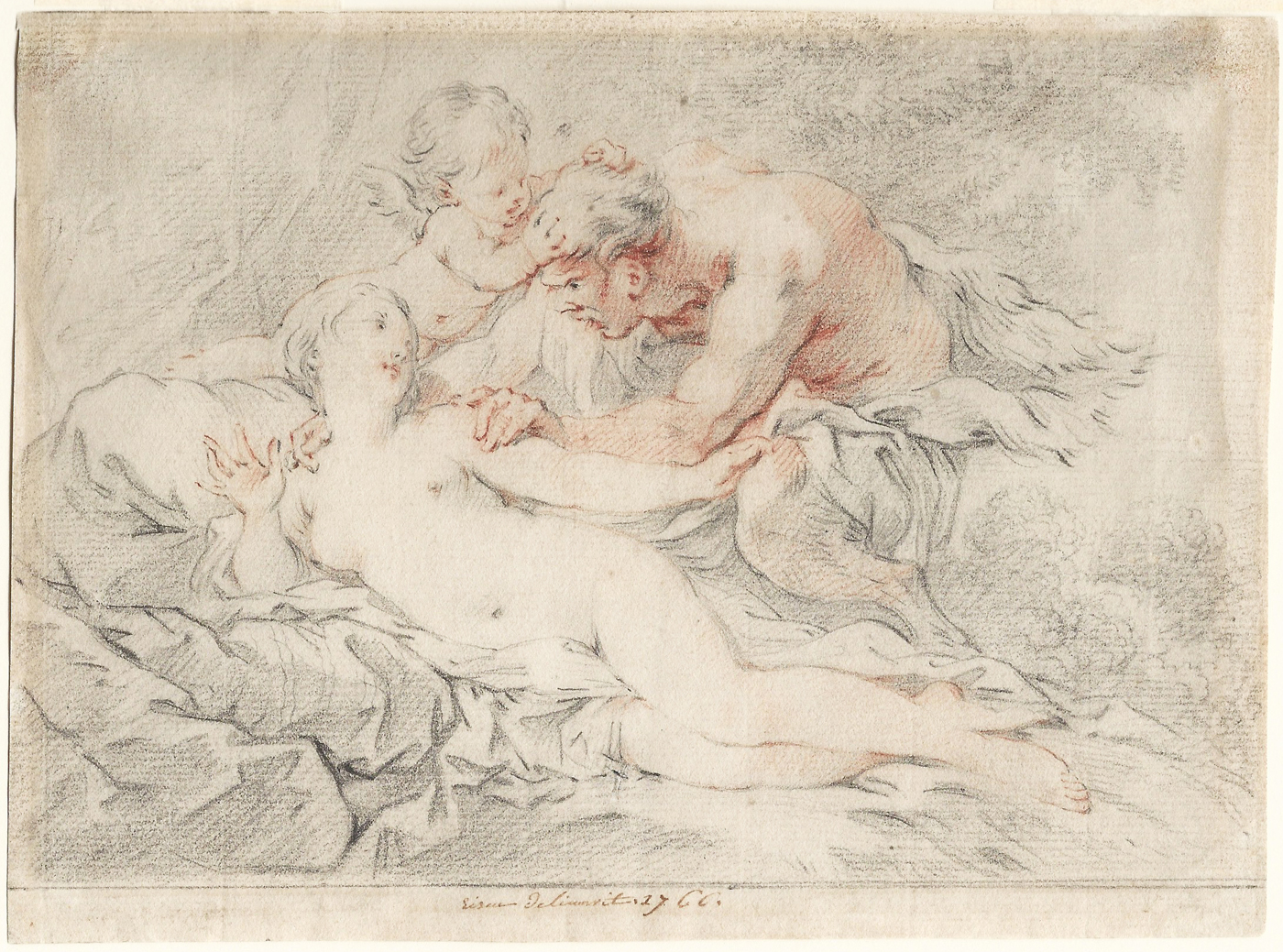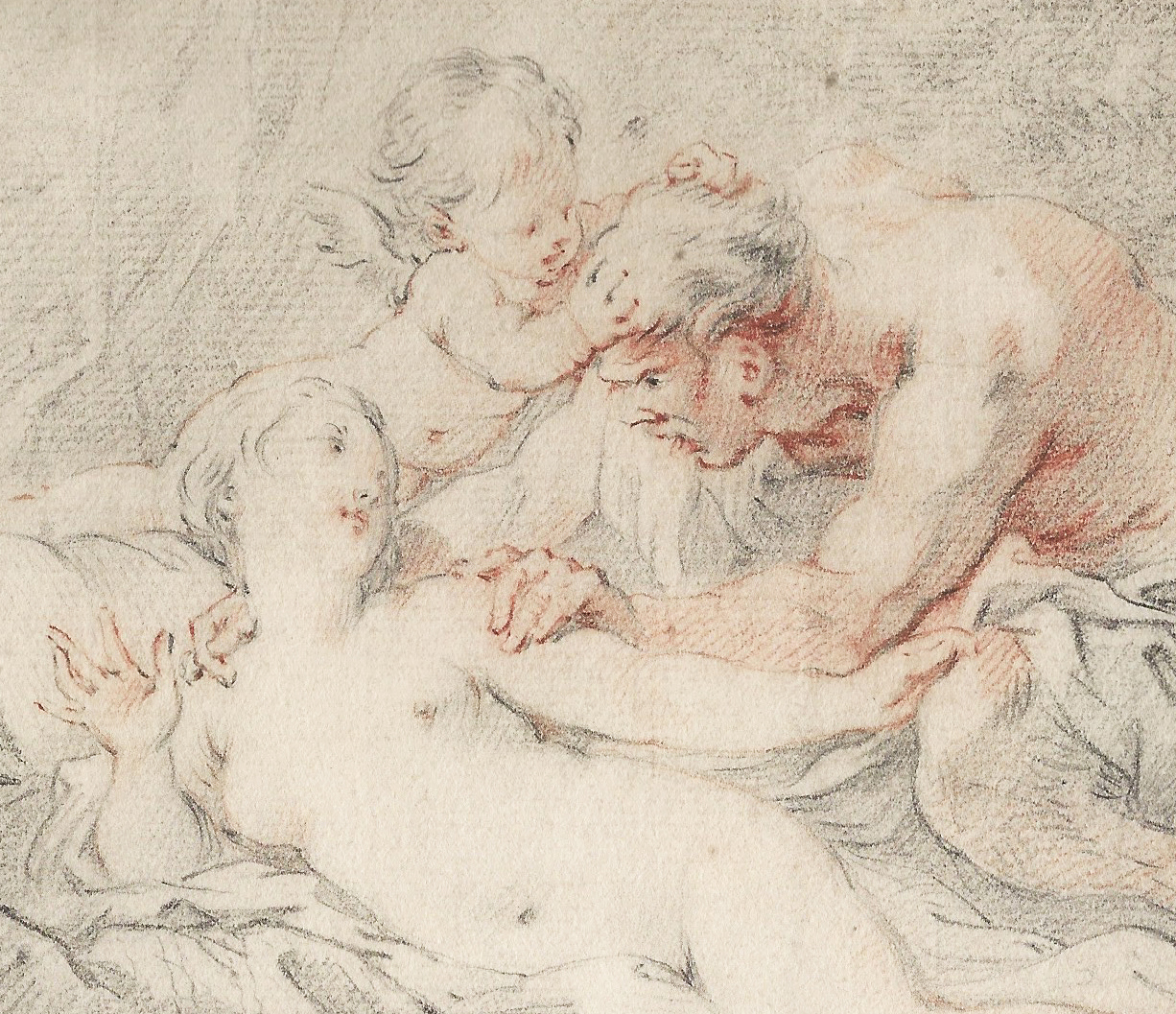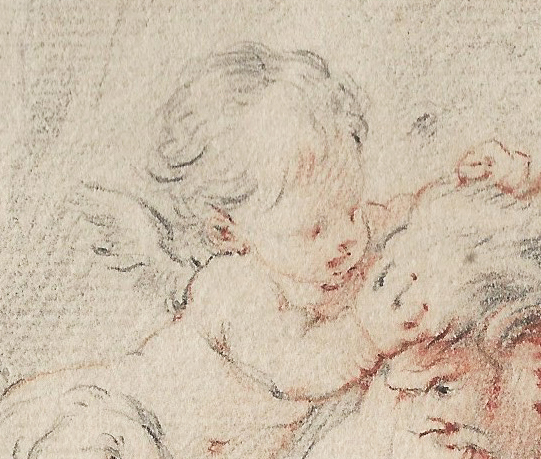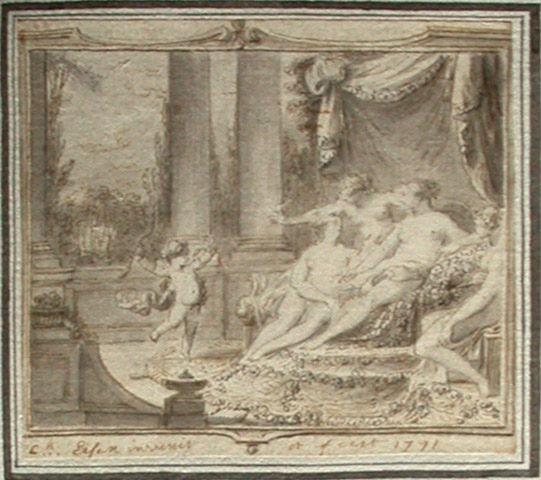CHARLES DOMINIQUE JOSEPH EISEN (Valenciennes 1720 – 1778 Brussels)
Charles Dominique Joseph Eisen (Valenciennes 1720 – 1778 Brussels)
‘Venus Defendue par l’Amour’
Black and red chalk, black chalk framing lines, fragmentary watermark coat of arms, 135 x 181 mm (5.3 x 7.1 inch)
Signed and dated ‘Eisen delineavit. 1766.’ (pen and brown ink, along the lower edge)
Provenance
Private collection, The Netherlands
***
The son and pupil of François Eisen (c.1685–c.1778), Charles Eisen was further trained in the studio of the engraver Jacques-Philippe Lebas in Paris, where he had moved around 1740.1 His admission to the Académie de Saint-Luc was delayed for two years in a dispute over whether his talent entitled him to a reduced fee – Charles won a legal case and was finally admitted in 1750, without paying any fees. His talent and sparkling wit gained him admission to the Court, where he became painter and draughtsman to Louis XV, and drawing-master to Madame de Pompadour. In 1774 he was appointed assistant rector of the Académie.
He afterwards fell in disgrace and in 1777 retired to Brussels, where he died in poverty the following year. His pictures are not without merit, but it is as a designer of illustrations and vignettes for books that he is best known. The most remarkable of these are the designs for the Fermiers généraux edition of the Contes of La Fontaine, published at Amsterdam in 1762; Ovid's Metamorphoses of 1767-71; the Henriade of Voltaire, 1770; the Baisers of Dorat, 1770; and the Vies des Peintres hollandais et flamands of Descamps, published in 1751-63. In these, he is the epitome of the authentic Louis XV galant style – piquant, playful and dominated by images of women. According 18th-century sale catalogues, Eisen frequently elaborated 17th-century landscape drawings with figures, although none of these are known today.
Our drawing is particularly luscious and reveals the overwhelming influence of François Boucher (1703–1770), also much patronised by Mme de Pompadour. In the present drawing, Venus is besieged by an adamant Satyr, who is being resisted by Cupid. In 1766 Eisen was at the height of his career, which coincided with the culmination of French Rococo art, only a decade or so before its eventual decline under Louis XVI, who ruled from 1774 and favoured a more restrained and Classical style.
A large group of drawings and vignettes by Eisen is preserved in de Musée Condé in Chantilly, and our sheet can for instance be compared to Eisen’s Venus Surrounded by Cupid and Nymphs of 1772 in that collection (fig.).2 Eisen’s use of ‘delineavit’ rather than ‘invenit’ in the present work might suggest it was not intended to be engraved, but was executed as a work of art in its own right, intended to be framed and displayed, which is also suggested by the painterly use of both black and red chalk.
SOLD
1. For the artist, see and D. Coekelberghs and P. Loze, 1770-1830. Om en rond het neo-classicisme in België, exh. cat. Brussels (Museum van Elsene) 1985-86, pp. 51-52 and furthermore the biography in Saur Allgemeines Künstlerlexikon: die bildenden Künstler aller Zeiten und Völker, Munich 1992- , vol. 33 (2002), pp. 33-35.
2. Black chalk, grey wash, signed and dated ‘Ch. Eisen invenit et fecit 1772’, inv. no. IX-G-41-22; the drawing is one of 28 sheets in preparation for the Vie d'Anacréon, Sapho, Bion et Moschus, Héro et Léandre, published by Lamy in Paris in 1782





